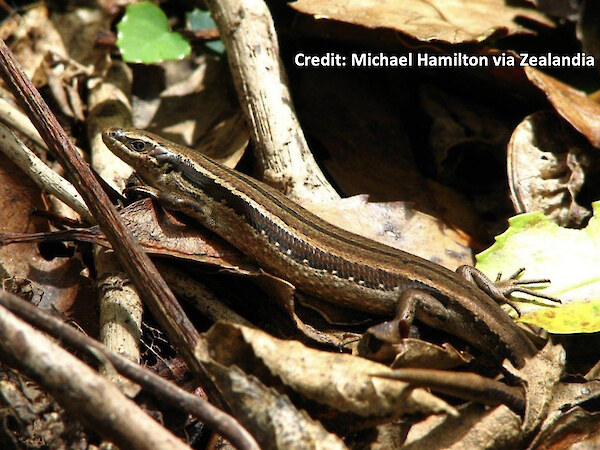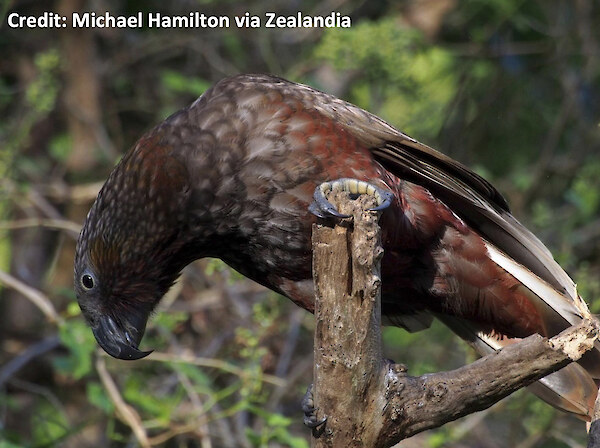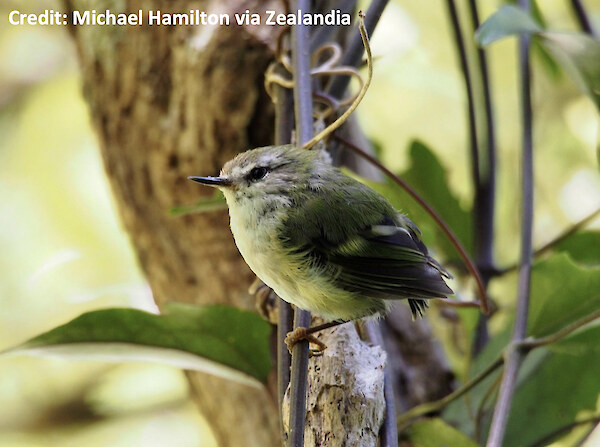Manu (birds)
 Tūī
Tūī
Tūī feed mainly on nectar from flowers and native plants. They have blue/green feathers and a white tuft at their throat. Tūī can live in cities but do best in areas with good predator control.
Hear the tūī call (credit: DOC)
Kererū
Kererū are large pigeons with blue/green feathers and a big white tummy. They can live up to 20 years and have one chick per year, so their numbers are affected by predators like rats.
Hear the kererū call (credit: DOC)
Kākā
Kākā are parrots with claws, hooked beaks and olive/brown feathers. Through Zealandia and predator free efforts they are becoming more common in Wellington, though they still mainly live on off-shore islands. They are noisy and charming birds!
Hear the kākā call (credit: DOC)
Titipounamu
Titipounamu (riflemen) are wrens and are one of the country’s smallest birds. Some titipounamu have flown over Zealandia’s fence and begun breeding. Their call is a high-pitched ‘zipt zipt zipt’ and they are usually seen looking for insects on tree trunks.
 Pīwakawaka
Pīwakawaka
Pīwakawaka (fantails) are one our most common birds and its tail has fan-like feathers. This energetic bird makes a recognisable ‘cheet cheet’ and feeds mainly on insects.
Hear the pīwakawaka call (credit: DOC)
 Kākāriki
Kākāriki
Kākāriki (parakeets) are a small green parakeet. There are different kinds with different coloured heads (including red, yellow and orange). These forest birds nest in the holes of trees and feed on berries, fruit, seeds and insects.
Hear the kākāriki call (credit: DOC)
 Ruru
Ruru
Ruru (morepork) are a small brown owl with a haunting call. They are awake at night (‘nocturnal’) and eat small birds and insects. Ruru live in forests across the country.
Hear the ruru call (credit: DOC)
 Kārearea
Kārearea
Kārearea (bush falcon) are falcons that can fly at up to 200 km/h and hunt animals like birds. There are only around 6,000 left in New Zealand.
Hear the kārearea call (credit: DOC)
Reptiles
 Tuatara
Tuatara
Tuatara means ‘peaks on the back’. They live for around 60 years and their ancestors lived with the dinosaurs! Rats are a big threat to tuatara. Zealandia has a large population of tuatara.
 Moko Kākāriki
Moko Kākāriki
Moko Kākāriki (Wellington Green Gecko) are found in the lower North Island. They are green with white/yellow spots and their mouths are bright blue! They are nocturnal and hunt for flies and moths. These lizards make a barking call when they are threatened.
 Copper Skink
Copper Skink
The Copper Skink is one of nearly 80 kinds of native skink. They are active in the daytime and hide under logs and rocks. They are the country’s smallest skink and have a narrow copper stripe on their back.
Invertebrates
 Tree wētā
Tree wētā
Wellington tree wētā are a common wētā that eats fruit and leaves and are active at night. Once hatched from their eggs, tree wētā take two years to become adults. Like cicadas, they can sometimes be heard at night scraping their legs over bumps on their body.
 Giant wētā
Giant wētā
Cook Straight giant wētā are one of New Zealand’s largest wētā. They feed on fruit and leaves at night on the forest floor. These wētā were reintroduced to Zealandia in 2007. They live for two years and female wētā lay around 200 eggs.



